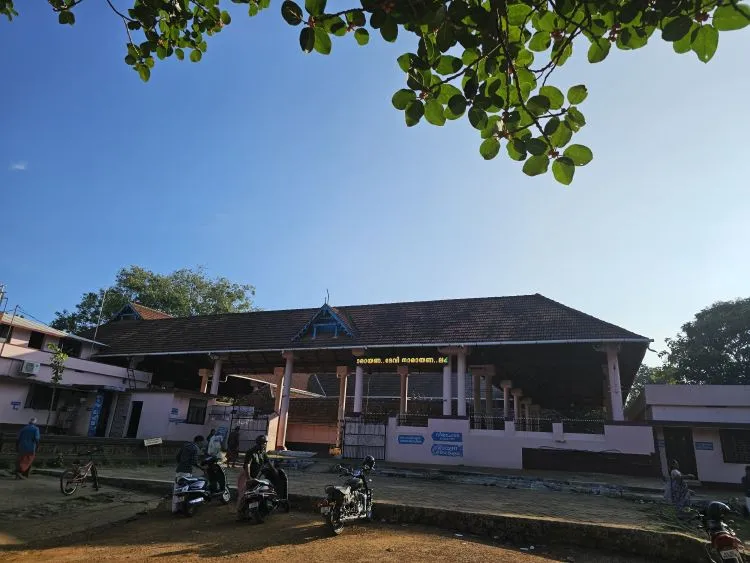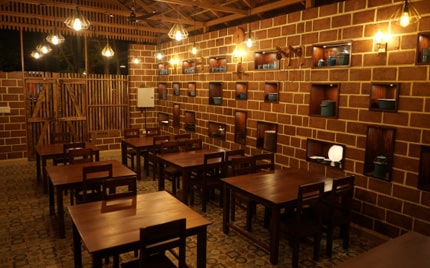Destinations
Thiruvilwamala, nestled amidst the Northern Mountain Range of Thrissur in Kerala, is a quaint hilly area. Positioned along the serene banks of River Bharathapuzha, Thiruvilwamala boasts several renowned landmarks including the revered Sri Vilwadrinath Temple, a cluster of Five Shiva Temples, and the Parakkottukavu Bhagavathy Temple, making it aptly described as a "Temple Town". Thiruvilwamala is enveloped by lush greenery, sprawling farmlands, and meandering rivers, creating a picturesque landscape.
Sree Vilwadrinatha Temple
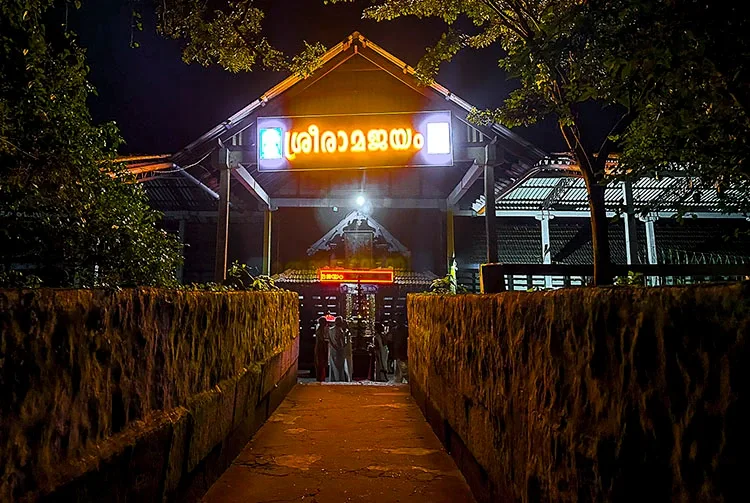
One of the four major temples in Kerala dedicated to Lord Rama is nestled on the top of a 100-foot-tall hill. The majestic flow of Bharathapuzha, the second-largest river in Kerala, is visibly stunning from the temple.
The temple is the abode of two shrines – one facing the eastern side and the other facing the western side. The god Hanuman shrine is placed on the southern side, outside the Nalambalam. He is the gatekeeper of the temple dedicated to Rama.
Vilwadrinatha temple hosts five poojas daily, with three Sreeveli caparisoned by the temple elephants. Experts believe that the oldest recorded history of Kerala dates to the period of Cheramaan Perumal, and this cultural sanctuary’s history dates to 392 AD when Cheramaan Perumal gave the land to Perumapadappu Swaroopam(the kingdom of Cochin).
Punarjani Cave
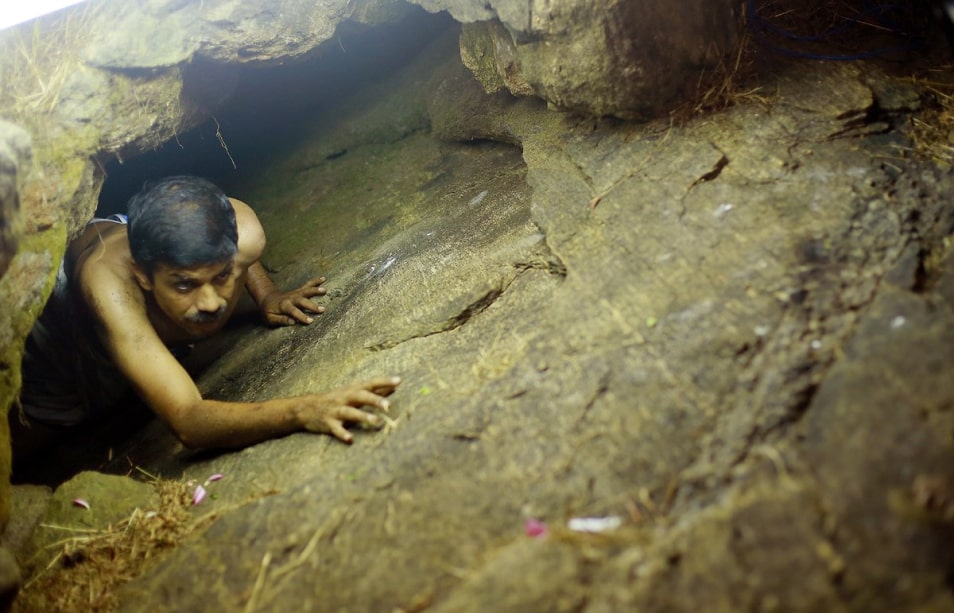
Punarjani Cave near Thiruvilwamala, Kerala is famous for the "Noozal" ritual. Devoted to Lord Ram, the cave is 150 meters long, narrow, and sloping, and only men can perform the ritual. The "Noozal" is believed to reduce one's cycle of births and deaths.
Sree Parakkottu kavu Devi temple
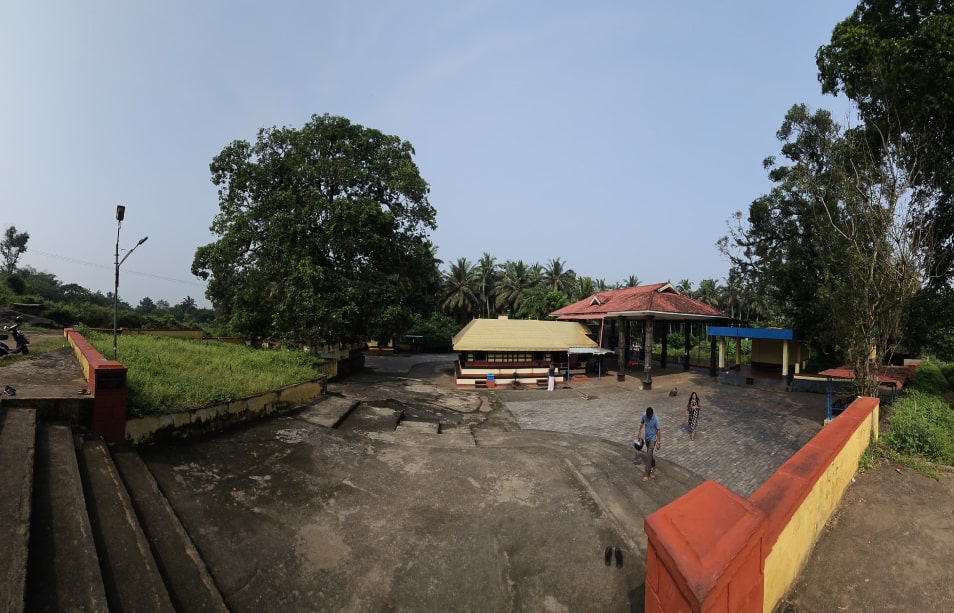
A few minutes' walk from the Sree Vilwadrinatha temple gets you to another culturally significant temple. Sree Parakkottu Kavu Devi is prominently known for its festivals. Every year, the temple ‘Thalapoli’ takes place on the final Sunday of the Malayalam month Medam (during May), where the idol of the main deity is featured on top of decorated elephants accompanied by music and magnificent fireworks. Three neighboring areas – Padinjattumuri, Kizhakkumuri, and Pampady, engage in a spirited yet friendly competition.
Ivor Madom Parthasarathy Temple
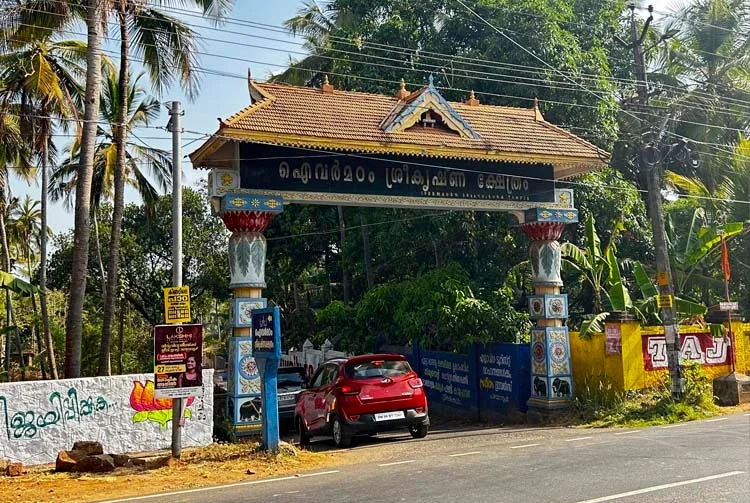
Are you interested in the Kurukshetra war in Mahabharata and the mythologies of the five Pandavas? Then, this spiritually significant temple on the southern banks of Bharathapuzha is your go-to place. This place is said to be the place where Pandavas restored their sanity from the agony of the Mahabharata war. Bharathapuzha is believed to have cleansed them of all their sins and even now devotees in Kerala surrounding stage visit the temple to perform the last rites for the departed.
Ivor Madom Parthasarathy temple, in which the Ivor means five people and Parthasarathy refers to the form of Lord Krishna as the charioteer of one of the Pandavas. You can visit the temple from our homestay in the traditional Mundu for men and women entering the temple in Saree or Set Mundu (traditional clothing worn by women in Kerala).
Sree Chinakkathoor Bhagavathi Temple
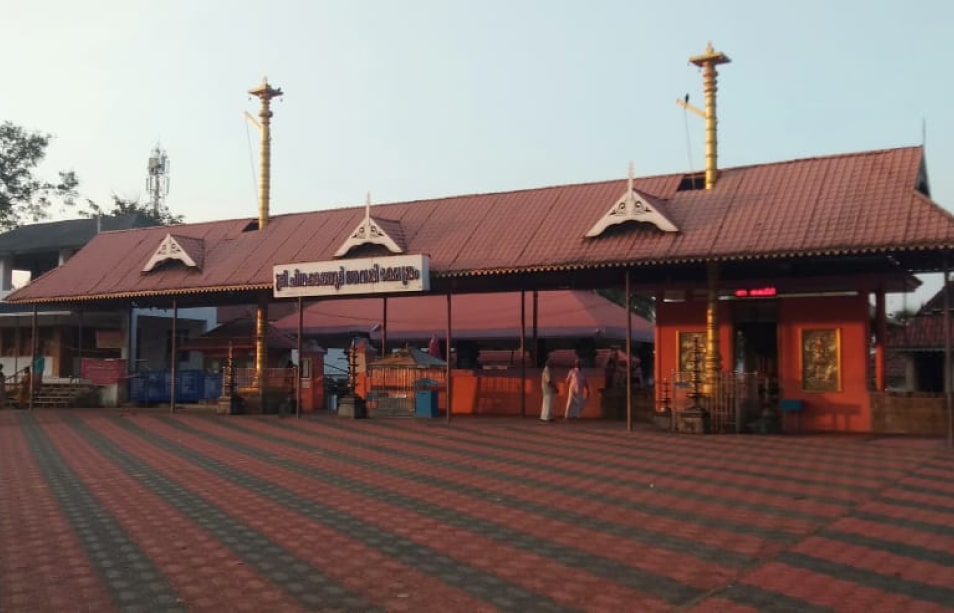
The temple is known for its festival, Chinakkathoor Pooram, with the majestic procession of 28 tuskers. During February and March, you can reach the Pooram in just 16 minutes from Thiruvilwamala. Chinakkathoor Pooram is the best place for the art buff in you.
The festival is highlighted with traditional Kerala art forms, whether it be performing or orchestral arts. The festival starts with ‘Kuthirakali’ and even the devotees ceremoniously bring 16 models of Kuthira (horse) and Kaala (bull) to the temple.
You might even love to reach the festival earlier to see the puppet shows, which precede about two and a half weeks from the concluding festivals.
Pampady Sree Paampumkaavu
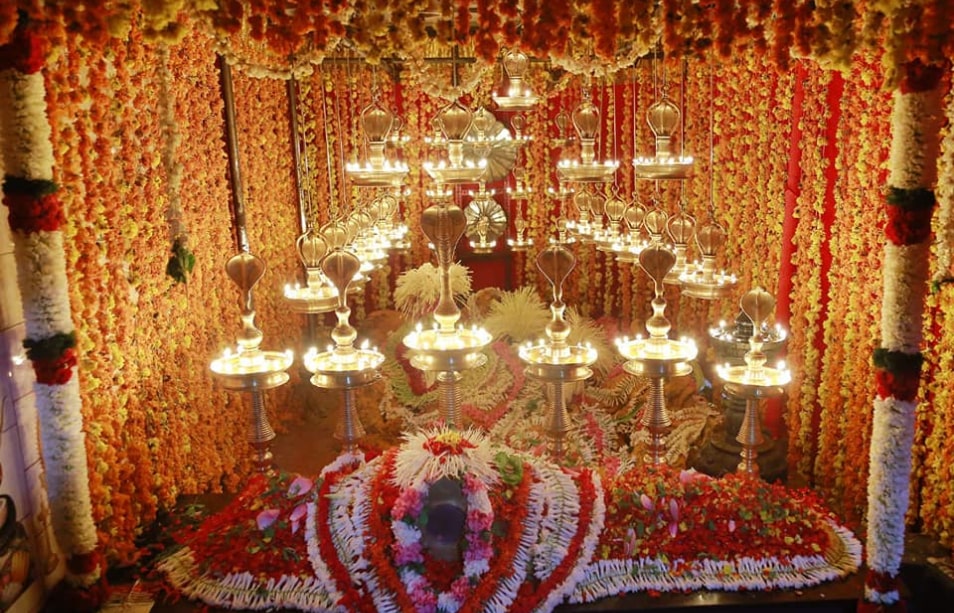
The temple in Kerala is renowned for its reverence towards snakes, with a tradition dating back to ancient times. Notably, there are no artificially crafted idols within its premises. Instead, devotees worship Nagaraja and Nagakanya at naturally formed serpent mounds located in Sivaakara. Visitors to the bathing ghats of Ivor Madom and the revered hills of Villwadarinathan often make it a point to include a visit to this magnificent shrine dedicated to Nagaraja in their itinerary.
Shirdi Saibaba Temple
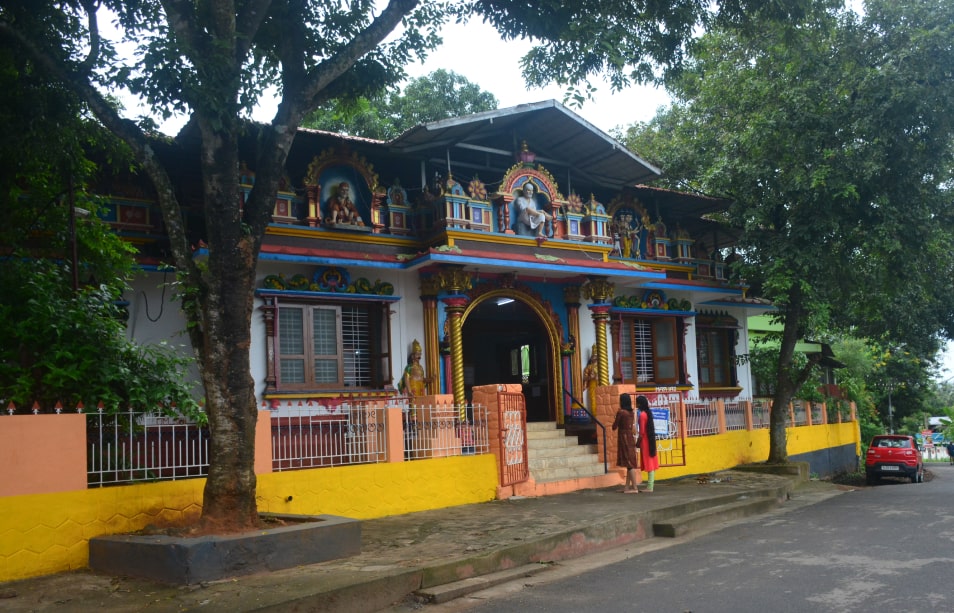
Shirdi Saibaba temple in Thiruvilwamala, Kerala, was built in 1989, adorned with a beautiful marble statue of Saibaba, resembling Lord Krishna in Guruvayoor. The idol's story dates back to 1987 when a devotee from Kuthampully village wished to build a temple. A sculptor donated the marble statue, which was kept in the family's house until the temple's construction.
Check Dam Thottumukku
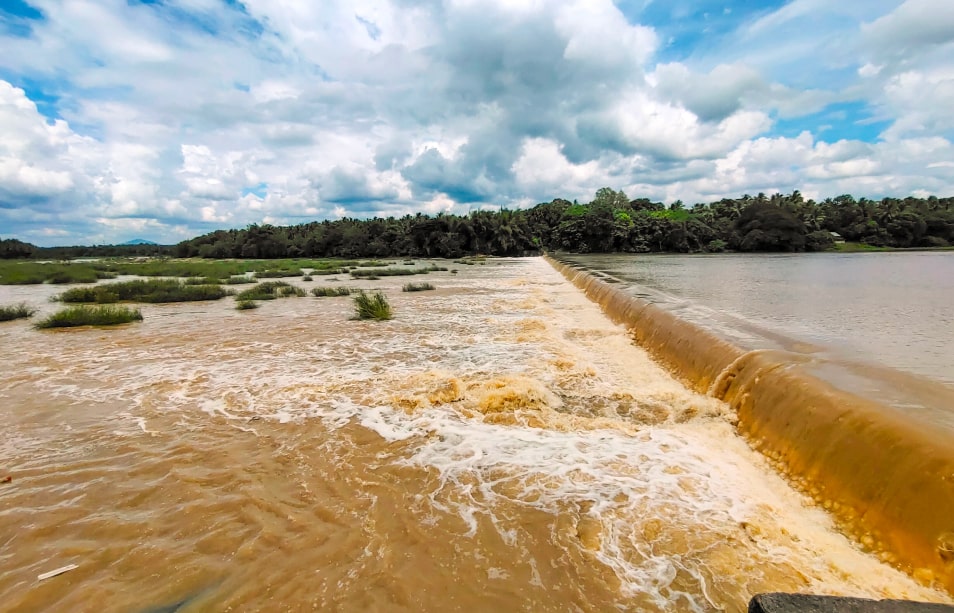
The check dam at Thottumukku is a small dam that reduces water flow and prevents soil erosion. It provides water for irrigation, drinking, and livestock while preserving fertile soil and improving local water quality. The check dam plays a crucial role in sustaining the local ecosystem and is a valuable asset for the community.
Kuthampully Village
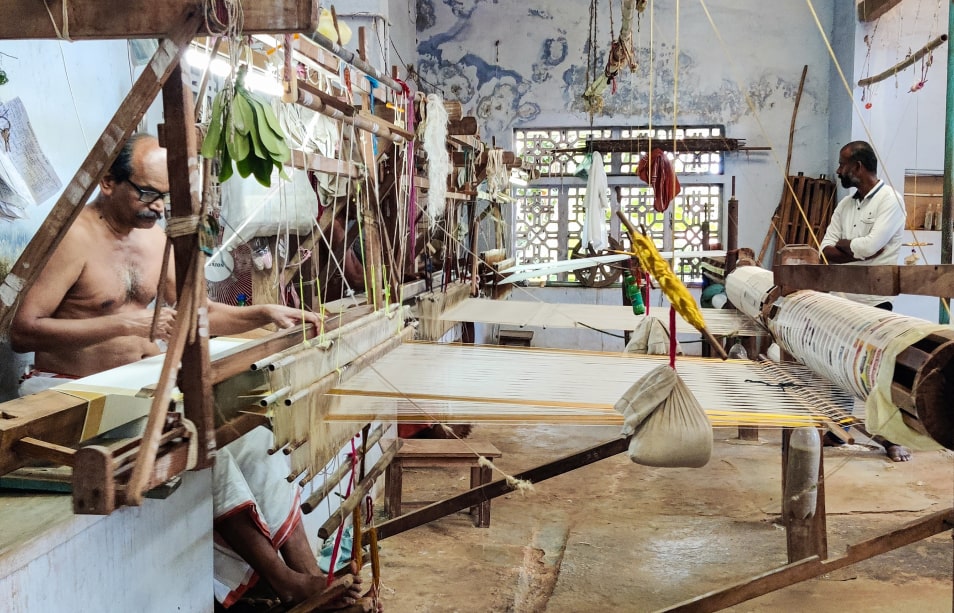
Kuthampully is a weaving village in India known for its cotton sarees and traditional handloom techniques. Most residents are Brahmins of the Devanga community, brought there 500 years ago by the Kochi Royal family. The Eravathodi, Thiruvilwamala, Kuthampully Handloom Industrial Co-operative Society combines traditional and modern techniques and employs over 3000 people in various businesses.
Bharatha Puzha
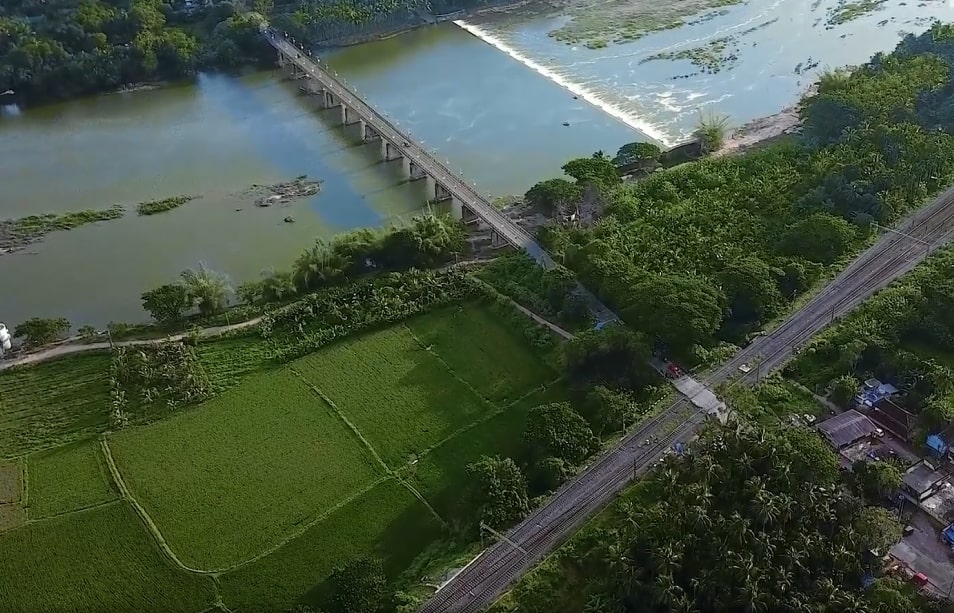
Bharathapuzha, affectionately known as Nila, gracefully meanders through the verdant landscapes of Kerala's Palakkad, Thrissur, and Malappuram districts, leaving an indelible mark on the region's culture and heritage. Spanning 209 kilometers, this majestic river embodies the natural beauty and spiritual essence of South Malabar. Its serene waters, flanked by lush greenery and dotted with temples and historical sites, offer a captivating backdrop for tourists. From leisurely boat cruises to adventurous water sports and cultural experiences, Bharathapuzha beckons travelers to immerse themselves in its timeless charm and discover the soulful allure of Kerala's heartland.
Dhanvantari Paarambarya Ayurveda Vaidyasala
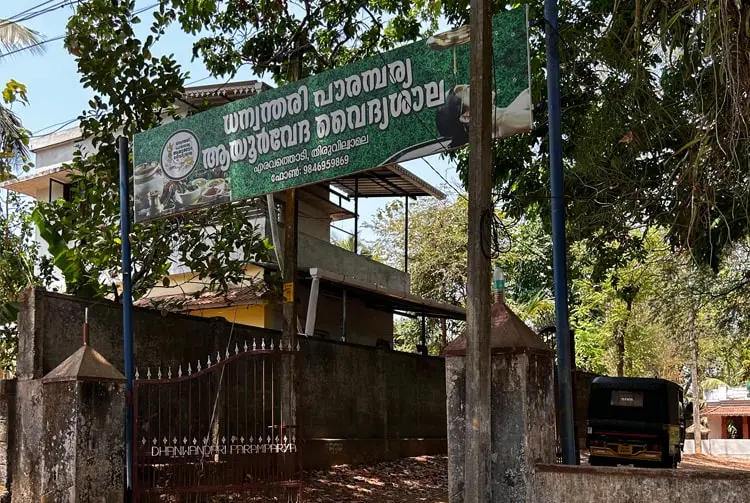
In the serene valley of Thiruvilwamala lies a gem that holds centuries of wisdom and healing - the Dhanvantari Paarambarya Ayurveda Vaidyasala. The clinic, nestled in the spiritually vibrant hill of Vilwadri, boasts a rich tradition of service spanning decades in the healthcare and wellness domain.
Under the expert guidance of seasoned practitioners, it offers a plethora of authentic Ayurvedic treatments, including Panchakarma, Uzhichil, Pizhichil, Dhara, Kizhi, and Sukha Chikitsa. Dhanvantari Traditional Ayurveda Clinic also extends its services with exclusive diagnosis and treatment facilities for women, acknowledging the unique health needs of every individual. In essence, a visit to Dhanvantari Traditional Ayurveda Clinic is not just a journey for healing ailments; it is an odyssey towards rediscovering harmony, vitality, and the timeless essence of Ayurveda.
Peafowl Sanctuary
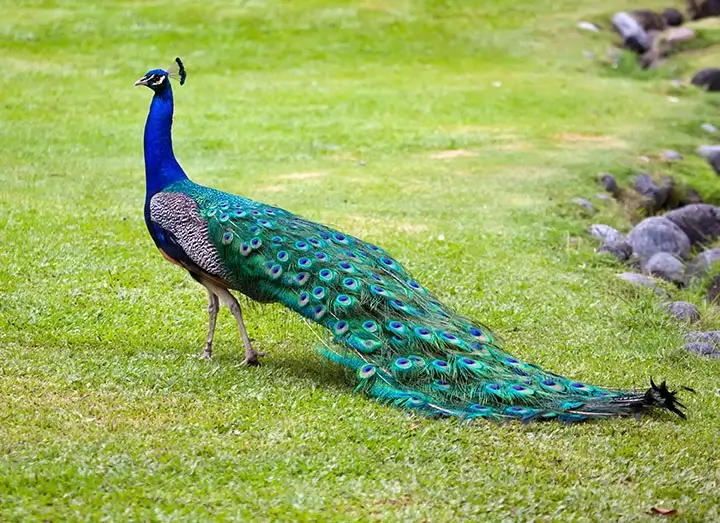
The Peafowl Sanctuary, situated in Chunalur within Palakkad's Alathur Forest range, spans 500 hectares of land. Visitors can enjoy a scenic walk of approximately one and a half kilometers to observe the beautiful peafowls.
During the evenings, these magnificent birds can also be sighted in nearby areas. Additionally, there is a Butterfly Park situated within the sanctuary grounds.
Rakshasapaara
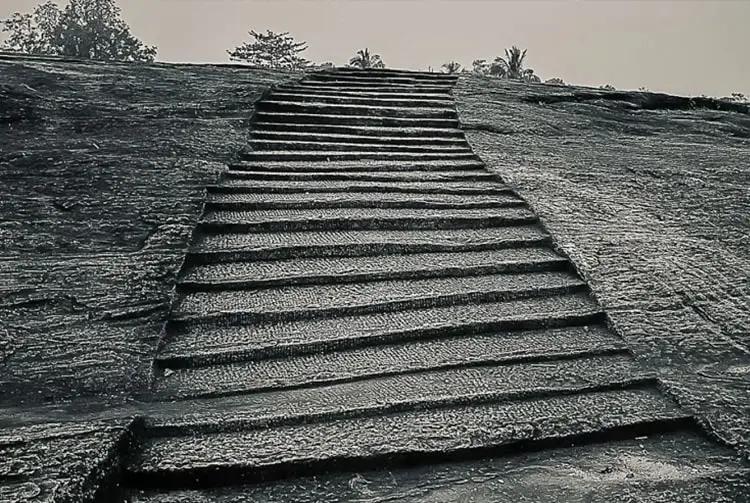
Rakshasapaara, a stunning rock hill near the Thiruvilwamala Vilwadarinatha Temple in Kerala, captivates visitors with its majestic formations and scenic views. Adjacent to this natural marvel is Punarjani, renowned for its ancient caves and spiritual significance, believed to offer a rebirth experience during Guruvayur Ekadashi. The proximity to the historic Vilwadarinatha Temple, dedicated to Lord Rama and Lord Lakshmana, enriches the visit with cultural and religious depth. This serene destination, with its blend of nature, spirituality, and heritage, provides a tranquil escape for hikers, photographers, and spiritual seekers alike, leaving them with cherished memories of Kerala's enchanting beauty.
Places nearby Thiruvilwamala
Varikkasseri Mana
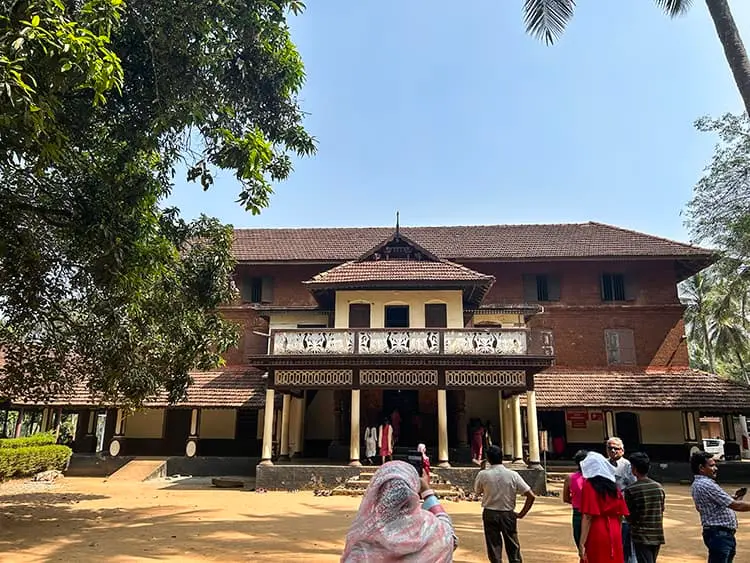
Varikkasseri Mana is a traditional Kerala-style house known for its architecture and cultural significance, showcasing the traditional lifestyle of the Kerala people. It's over a hundred years old and a protected monument open to the public, popular for its cultural and historical significance.
Killikurissi Mana
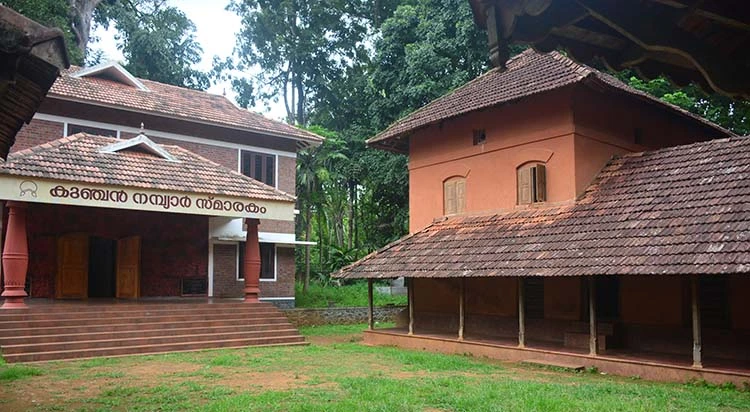
The Kunjan Nambiar Memorial is located at Killikurissi Mangalam and was established to commemorate the contributions of Kunjan Nambiar to the modern Malayalam language and literature. The government of Kerala took over the Kalakathu Bhavan and 56 acres of land around it in 1975 and converted it into a national memorial. The memorial aims to propagate the ideals and philosophy of Kunjan Nambiar through activities such as translations, stage presentations, public meetings, seminars, and the construction of a library.
Kerala Kalamandalam
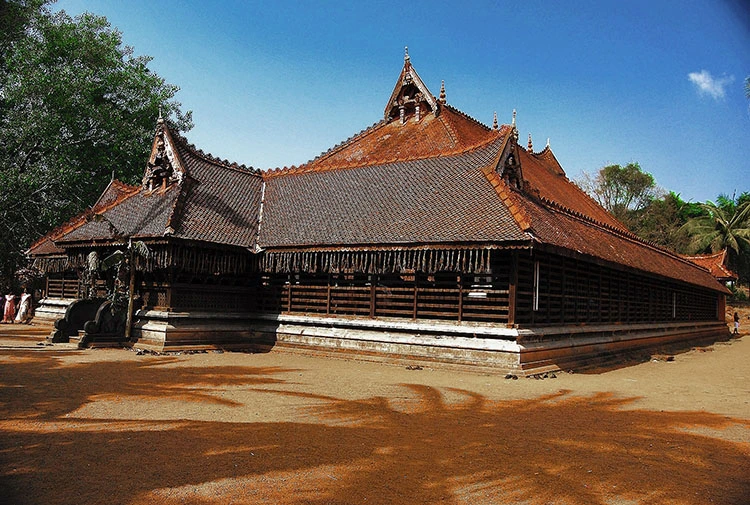
Kerala Kalamandalam is a university in India preserving the artistic heritage of Kerala through training and performance in arts such as Kathakali, Mohiniyattam, Kutiyattam, Panchavadyam, Thullal, Mridangam, and Karnatic music. Founded by poet 5Vallathol Narayana Menon and Manakkulam Mukundaraja, it's been a deemed university since 2007.
Guruvayoor Temple
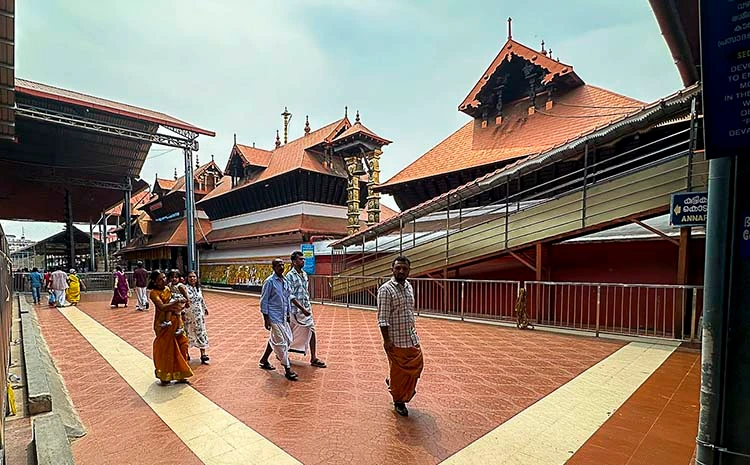
Guruvayoor Temple is a Hindu temple dedicated to Lord Krishna in Guruvayoor, Kerala, India. It's known for its beauty, and religious significance, and is a major pilgrimage site for Vaishnavism. Lord Krishna is worshipped as Guruvayoorappan.
Guruvayoor Temple Punathoor Anakotta
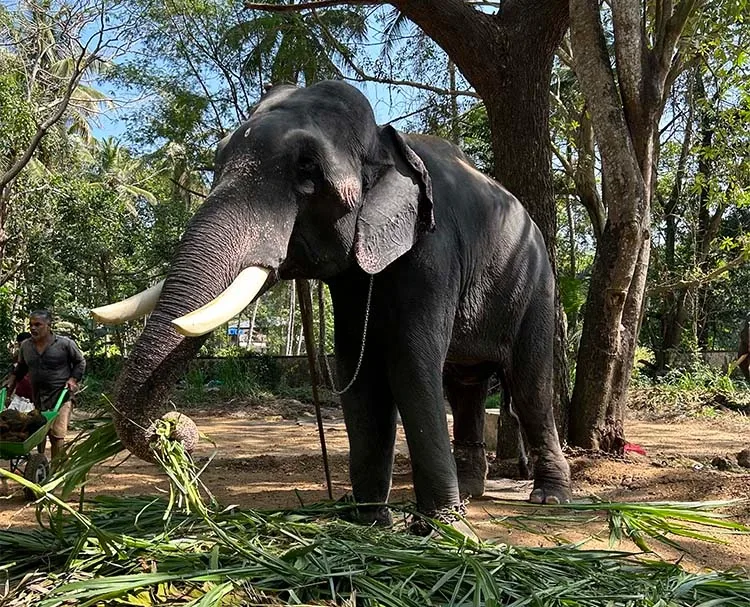
It is one of the largest elephant sanctuaries in the world and is a popular destination for elephant lovers and devotees. The temple is known for its peaceful atmosphere and serene surroundings and is a popular place for meditation and spiritual pursuits.
Krishnankutty Pulavar Memorial
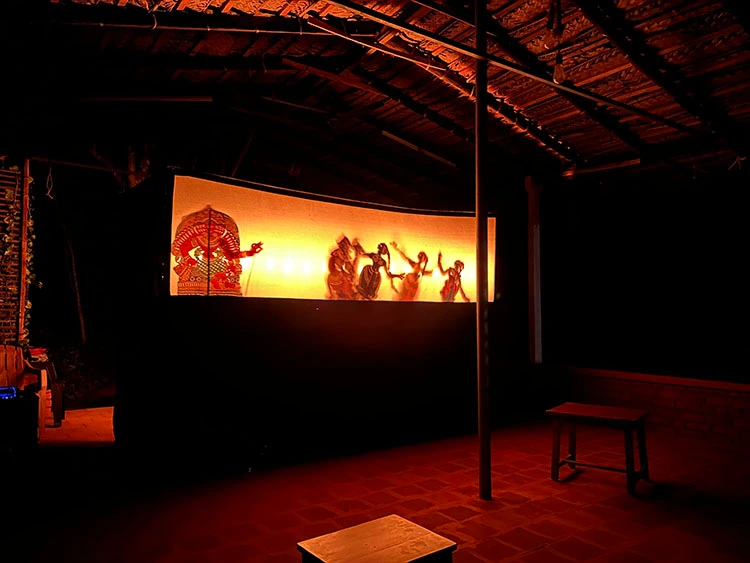
The Krishnankutty Pulavar Memorial Tholpava Koothu and Puppet Centre, nestled in Koonathara near Shoranur in the Palakkad district of Kerala, stands as a beacon of cultural heritage and artistic tradition. Named after the esteemed shadow puppetry artist Krishnankutty Pulavar, this center is dedicated to preserving and promoting Tholpava Koothu, an ancient form of shadow puppetry unique to Kerala. The term Tholpava Koothu translates to 'the play of leather dolls,' and this art form holds a special place in the cultural fabric of central Kerala, particularly in the districts of Palakkad, Thrissur, and Malappuram. At this center, visitors can witness the intricate preparations, stage setups, and captivating performances that bring mythological stories to life through shadows. The center is not only a performance space but also a hub for learning and sustaining this age-old ritual art, supported by a few dedicated practitioners who continue to uphold the legacy of their forebears.
Other temples nearby Thiruvilwamala
Mayannur Sri Kurumba Bhagavathy Temple
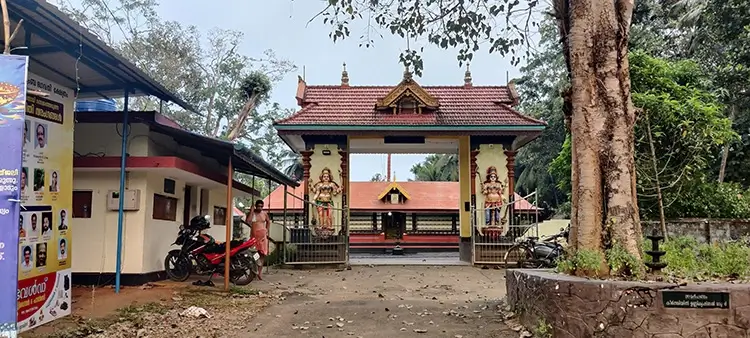
Mangottu Bhagavati temple
